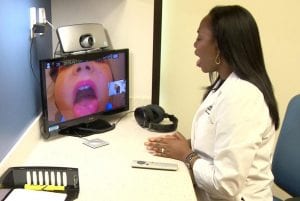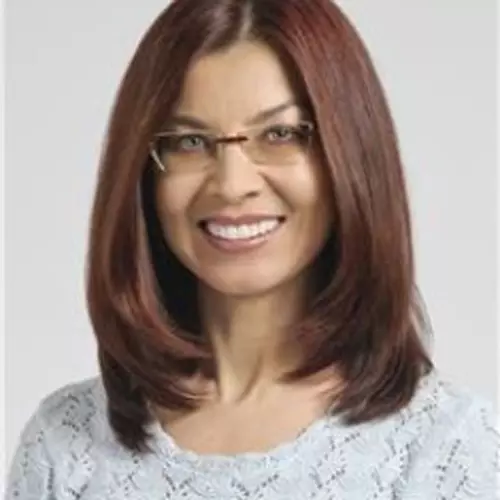Thousands of years ago, during the time of the Yellow Emperor, the most advanced diagnostic technologies available to physicians were observation, palpation, questioning, and listening, recorded in handwritten notes. This was enough for many generations of practitioners, but in the modern world of rapidly changing technologies, the old ways of practice, diagnosis, and record-keeping are no longer enough. Our profession must change and adapt to current requirements and standards of health care.
Changes are crashing in like an avalanche, particularly the explosion of telehealth services that resulted from the COVID-19 lockdowns and lower insurance reimbursement rates coupled with skyrocketing overhead as the entire healthcare system focuses on reducing costs. One of the most important developments in lowering costs is telemedicine/telehealth. This means less hospital space needed, no traveling, no parking, better access for rural areas, less exposure to other sick patients, and so on. In the five years before the COVID-19 pandemic, the number of telemedicine visits jumped by over 400%; now, however, everybody and their mother are on the telehealth train, frequently without any knowledge of associated laws, rules, and regulations.
Navigating the Challenges of Telehealth in Traditional Medicine
As a licensed healthcare practitioner, you must know and comply with legal requirements associated with the practice of telehealth. You are required to investigate telemedicine laws and acupuncturist practice laws in both the state where you practice as well as the one in which your patient resides, and you must be compliant with both. There are a lot of peculiarities, so please read the laws carefully. I started working on the incorporation of telemedicine visits for the TCM herbal clinic at Cleveland Clinic in 2016, well before the COVID-19 telehealth frenzy. Telemedicine is here to stay for the foreseeing future: it has been declared “mission critical” by VA and it opens access to a much broader patient population than those in the immediate vicinity of a clinic location. This makes it a great tool for practice expansion, especially in the realm of herbal medicine.
Overcoming Telehealth Obstacles
The largest obstacle I faced while creating our virtual herbal clinic was how to maintain mandatory practice standards, such as the collection of objective data, including pulse and tongue, during virtual telehealth appointments. I had to develop clear directions to guide our patients in providing accurate information: how to properly photograph the tongue, and more difficult, how to read their pulse. I researched an enormous number of pulse-taking devices, but couldn’t find a tool whose functions justified the cost. Most of them were developed specifically for TCM, based on palpation, and were very expensive. It was hard to ask our patients to spend that much for a tool with no other function than TCM pulse. Three years ago, I stumbled across a mobile ECG (EKG) device that is widely available, affordable, FDA-approved, HIPAA-compliant, and even allows the patient to share ECG data with their MDs if necessary. Eureka! I have used this device ever since, having devised a way to interpret the ECG data into TCM pulse patterns, and I will share this technique at the 2021 Pacific Symposium.
Are you interested in becoming a certified acupuncture professional?
Visit the links below to explore our specialized acupuncture programs at a campus near you:
Adapting to Administrative and Legal Changes
Another challenge for many of us in the era of telehealth is administrative, with the financial and time management logistics brought by telehealth options raising many questions. Is a phone consult considered to be a telehealth appointment? Can I use Skype or Facebook to communicate with my patient? How do we schedule virtual visits, collect cash, bill, dispense herbs? How do we ship herbs and still maintain good in-person acupuncture practice flow? I was fortunate and had four years to figure all of those out before COVID-19, and even during lockdowns and stay-at-home orders, not only was I working, I actually increased my patient population.
Another set of changes that came about in 2021 that affects our profession at large is mandatory changes for our SOAP notes. Sadly, not many TCM schools teach students standard ways of charting for a contemporary USA practice, where notes can be shared amongst healthcare professionals and audited for billing compliance. We learn “10 asking songs” in the style of ancient or modern China, which do not use American CPT coding standards, and as a result, our ability to work as part of the conventional healthcare system is greatly inhibited. If we take insurance billing seminars, which are mostly taught by insurance billing professionals and not licensed acupuncturists, vital guidance on medical decision making and how to formulate it, as well as how to support your billable diagnosis with the TCM pattern, is not presented. The moment we start talking about herbal notes this becomes “terra incognita” altogether. As a result, the majority of us violate state and federal guidelines that regulate herbs. With our profession moving ever further into the spotlight, we must protect our practices by learning how to record what we did in the most compliant manner. Remember that rules and regulations do NOT limit what you do, they just guide you on how to write down what you did! After billing Medicaid for three years and going through a scrutinizing internal note audit every three months, personally guided by an auditor, I learned so much about necessary details that must be reflected in each section of my SOAP note that I had not even known to ask before.
The first challenge is the healthcare notes transparency rule, which entitles patients’ access to their healthcare records. How does this affect us? What do I need to know about gathering and recording patients’ history, as well as ethical considerations? How do I write a treatment plan that is easily understood by the patient, and share my notes with the patient in a HIPAA-compliant manner? Am I mandated to use an electronic health records (EHR) system, and which EHR system will fit my practice?
The second challenge, released by the Centers for Medicare & Medicaid Services (CMS) and effective this year, is changes in Evaluation & Management (E/M) CPT selection guidelines that must be reflected in our SOAP notes. Very soon these guidelines will be implemented by private insurance payers as well. The most frequent questions I hear: how do I decide what level of history or physical examination is appropriate for this particular patient diagnosis or procedure? What is medical decision-making? How do I make, support, and properly record traditional medicine decision-making? Where do I write it in my SOAP? What other legal phrases must be present in my notes?
The last change, but certainly not the least, is the acceptance of new ICD-11 Diagnostic Codes by the World Health Organization, including Chapter 26 – Traditional Medicine Conditions (WHO), which will come into effect on January 1, 2022. I have been using standard terminology codes from the WHO’s beta version of this in my clinical practice since 2018, and I have to say it is easily doable for herbs, but very challenging for acupuncture, especially if you practice styles other than classic TCM. Understanding ICD codes and their relationship to the practice of TCM is essential. In TCM practice, diagnosis of disease is incomplete without pattern differentiation. To be compliant with hospital charting, ICD billing requirements, and documentation, your SOAP notes must support the treatment prescriptions of acupuncture points and/or herbal formulas.
The beauty of TCM lies in our ability to adapt. At Pacific Symposium 2021, we will talk in detail about how to embrace modern technological advances, which ensure increased access to our time-tested medicine and the thriving of our practices, in the “Traditional Medicine in the Era of Telehealth” class on the morning of October 29th.
Featured Posts:

